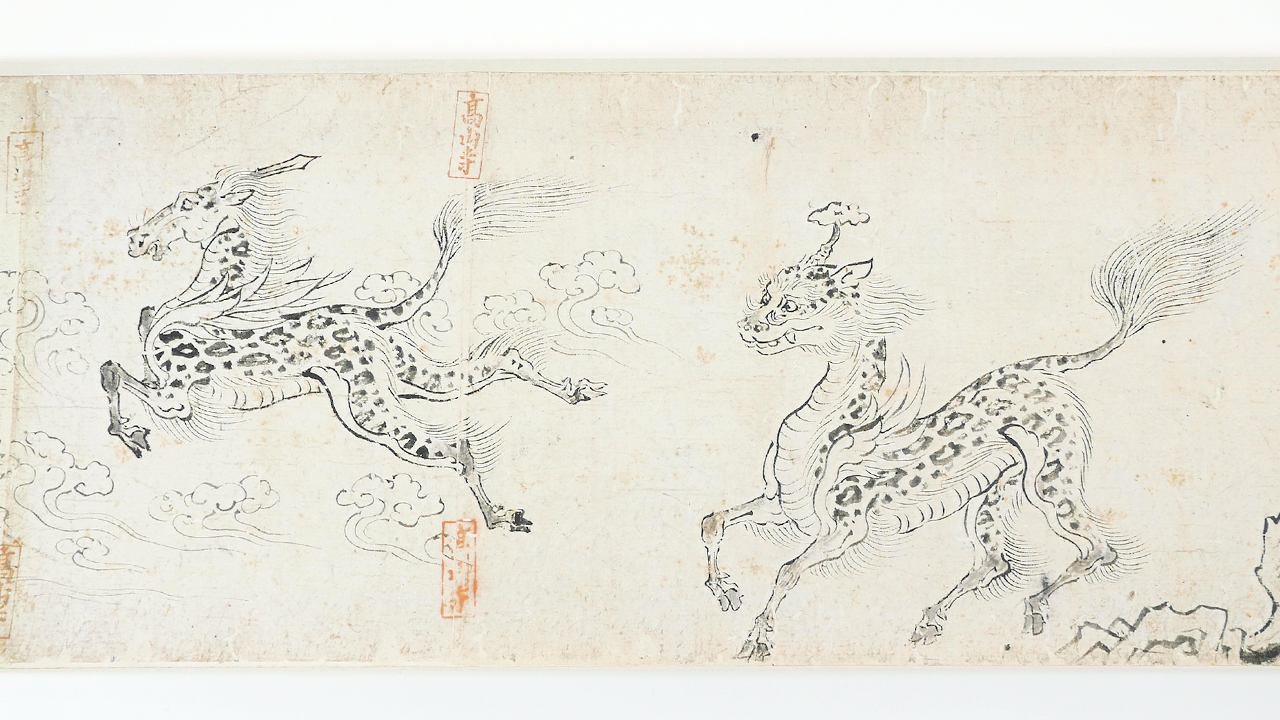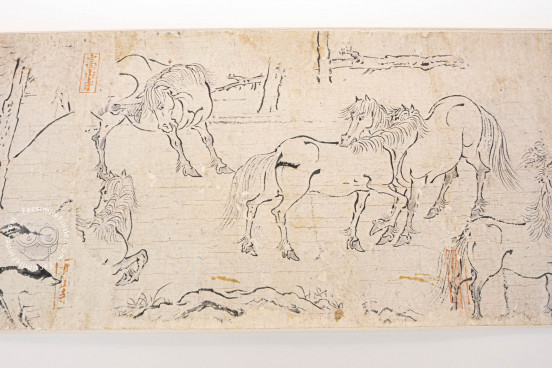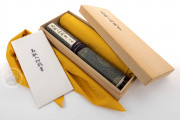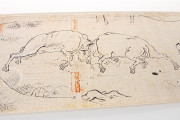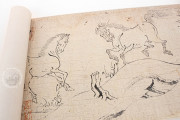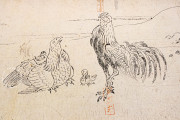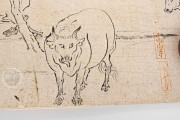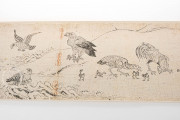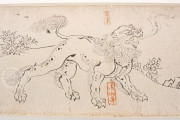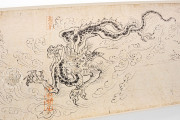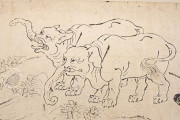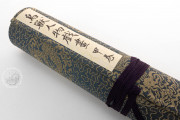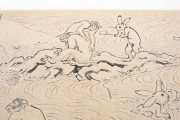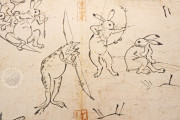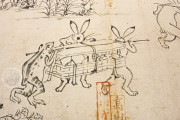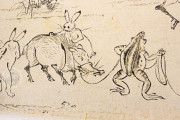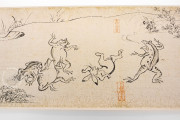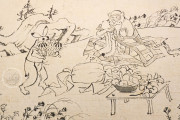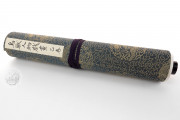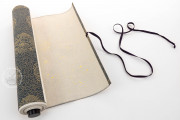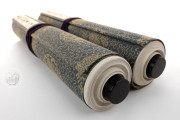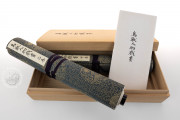The Choju-jinbutsu-giga, literally "Animal-person caricatures," is an outstanding collection of four scrolls from twelfth and thirteenth-century Japan, and a fine example of art from the Fujiwara period. Currently stored in the Kyoto Kōzan-ji temple, the scrolls depict frogs, rabbits, and monkeys dancing, swimming, and talking as if they were human. Thanks to its linear monochrome drawing style attributed to Toba Sōjō, the work is credited by some as the oldest example of manga and Japanese animated movies.
The rolls, which contain no writing, were meant to criticize Japanese priests by comparing them to toads, monkeys, and rabbits. The animals, with their eloquent facial expressions, engage in human-like activities, and the story unfolds from right to left, according to Japanese tradition.
The Origins of Japanese Caricature
The work consists of four separate scrolls. The best-known scrolls are Scroll One, depicting delightful animals in the forest such as rabbits, monkeys, and frogs, and Scroll Two, in the same style, with natural drawings of animals such as horses, oxen, and lions.
Scroll Three (containing paintings of human figures and animals) appears to have been influenced by Scrolls One and Two and completed sometime afterward. Like Scroll Three, Scroll Four depicts human figures in a simplified style.
The Choju-jinbutsu-giga has been traditionally been attributed to the artist Kakuyū, also known as Toba Sōjō (1053-1140) who was a pioneer of comic illustration (oko-e). However, this has never been proven, and the presence of the brushwork of various artists suggests that the scroll incorporates works completed by several artists at different times.
The black and white scrolls do not contain any narration. They are composed using fine black brush lines (hakubyō) which demonstrate the beauty of monotone paintings. Forms are delineated by minimal lines for a high level of abstraction. Masterful drawing and the modulated, rhythmical free-flowing lines contribute to a skillful composition which creates the effect of a hand-held animation.
Line Drawing: The Birth of a Genre
By copying original artwork that arrived by boat from China and the Korean peninsula and creating their own work based on them, Japanese artists were able to polish their technique and to develop their ability to freely compose line drawings. Much of their work was concerned with painting the gorgeous interior of buildings and Buddhist sculptures.
The use of line drawings in paintings gradually expanded until it was used to create entire works. The latent talent of early line drawings developed and eventually became a genre unto itself. The Choju-jinbutsu-giga is an early example of this genre which can be seen in later works such as the Ban Dainagon Emaki and the Shigisan-engi.
The first two scrolls of the Choju-jinbutsu-giga are entrusted to the Tokyo National Museum, and the second two are housed in the Kyoto National Museum.
We have 1 facsimile edition of the manuscript "Choju-jinbutsu-giga": Choju-jinbutsu-giga facsimile edition, published by Maruzen-Yushodo Co. Ltd., 2004
Request Info / Price
